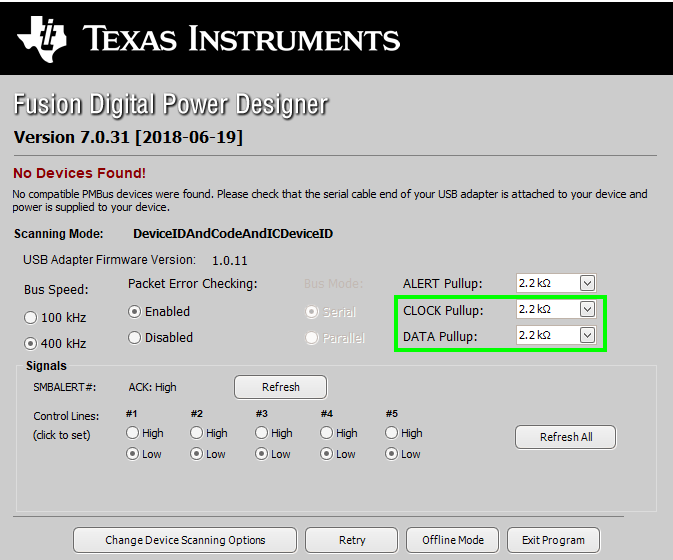Other Parts Discussed in Thread: UCD9240
Hello,
One of our customers is experiencing the following problem. Any troubleshooting steps are appreciated! Let me know if you need more info:
" We use two UCD9246 with each chip controlling one voltage rail with 6 phases, both are on the same PMBUS. In the beginning, we configured the parts using TI tool to program the sequencer. The PMBus are exported to a microcontroller and used by the firmware.
During the first time power up, the firmware will use the TI scripts to configure the UCD9246 parts using PMBus commands. Before sending the commands to the chips, both chips will have power enabled, and reset signal released. Probing with scope verified that the power and reset signal are working as expected.
All sensor read to the chips are suspended until after the chips are configured via firmware.
We are having two issues when trying to configure the parts:
- The chips would fail to communicate via PMBUS (NACK to PMBUS commands) intermittently.
There are occasions when the communications would work right away after reboot, but sometimes it required 3-4 power cycles before the parts responded to the PMBus commands with ACK.
When the chip failed to communicate, sometimes it ACKed on the first few commands, then NACKed on the rest.
- The first command we are trying to send to the parts is PHASE_INFO. This command always got NACK from the parts.
If I add another PMBUS command before sending PHASE_INFO, then it would get ACK ok. Which tells us the chip is operational.
If I add a soft-reset command is issued before the first PHASE_INFO command, all communications ACK successfully. However I would assume soft-reset should not be a requirement here.
Could you please give me some suggestion on our observations and any steps to debug these issues?"
Thank you,
Ryan B.


